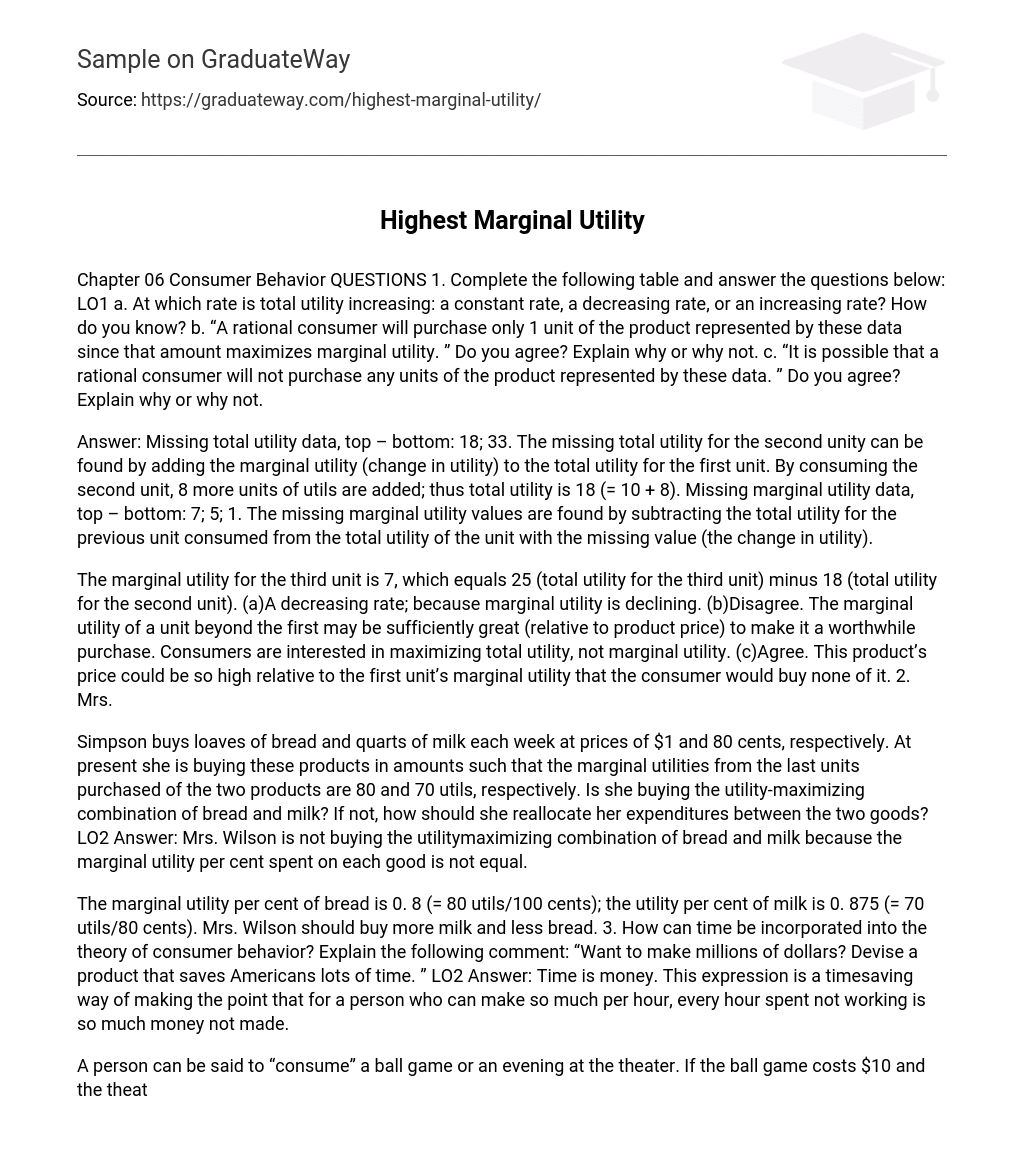Let MUA = z = 10 – x and MUB = z = 21 – 2y, where z is marginal utility per dollar measured in utils, x is the amount spent on product A, and y is the amount spent on product B.
Assume that the consumer has $10 to spend on A and B—that is, x + y = 10. How is the $10 best allocated between A and B? How much utility will the marginal dollar yield? LO3 Answer: $7 on good B; $3 on good A; MUA = 7, MUB = 7. Feedback: To solve this system of equations we set the MUA=MUB. This is required if we are maximizing utility. This leaves with only x and y to solve for using the individual’s budget constraint.
Consider the following equations: Let MUA = z = 10 – x and MUB = z = 21 – 2y, where z is marginal utility per dollar measured in utils, x is the amount spent on product A, and y is the amount spent on product B.
Also, assume that the consumer has $10 to spend on A and B—that is, x + y = 10. We know from our optimization rule that MUA=MUB, which implies 10 – x = 21 – 2y. Or, after some rearranging, 2y – x = 11. Combining this equation with our budget constraint, x + y =10, we have two equations and two unknowns (x and y). Use the budget constraint to solve x, or x = 10 – y. Substitute x from this equation into our optimality rule (2y – x = 11), which gives us 2y – (10 -y) = 11. Again after some rearranging, we have 2y – 10 + y = 11, or 3y = 21. Thus, we spend $7 on good B. Using our budget constraint 9x + y =10), this implies we spend $3 on good A.
To check our answer, substitute these values into the marginal utility equations: MUA= 10 – x, or MUA = 10 -3 = 7 and MUB = 21 – 2y = 21 -2×7 = 7. Thus, MUA=MUB. 7. Suppose that with a budget of $100, Deborah spends $60 on sushi and $40 on bagels when sushi costs $2 per piece and bagels cost $2 per bagel. But then, after the price of bagels falls to $1 per bagel, she spends $50 on sushi and $50 on bagels. How many pieces of sushi and how many bagels did Deborah consume before the price change? At the new prices, how much money would it have cost Deborah to buy those same quantities (the ones that she consumed before the price change)?
Given that it used to take Deborah’s entire $100 to buy those quantities, how big is the income effect caused by the reduction in the price of bagels? LO4 Answers: 30 pieces of sushi and 20 bagels; $80 (= 30*$2 + 20*$1); $20. Feedback: Consider the following values as an example. Suppose that with a budget of $100, Deborah spends $60 on sushi and $40 on bagels when sushi costs $2 per piece and bagels cost $2 per bagel. But then, after the price of bagels falls to $1 per bagel, she spends $50 on sushi and $50 on bagels.
This implies that Deborah bought 30 pieces of Sushi (=$60/$2) and she bought 20 bagels (=$40/2) before the price change. If Deborah purchased the same quantities of Sushi and bagels with the new prices it would only cost her $80. She still spends $60 on Sushi because the price hasn’t changed (still $2) and she was consuming 30 pieces. However, the cost of the 20 bagels has fallen to $20 because the price of the bagel is only $1 now. This implies Deborah has an additional $20 to spend as a result of the price decrease on bagels (= $100 (original cost) – $80 (new cost)).





